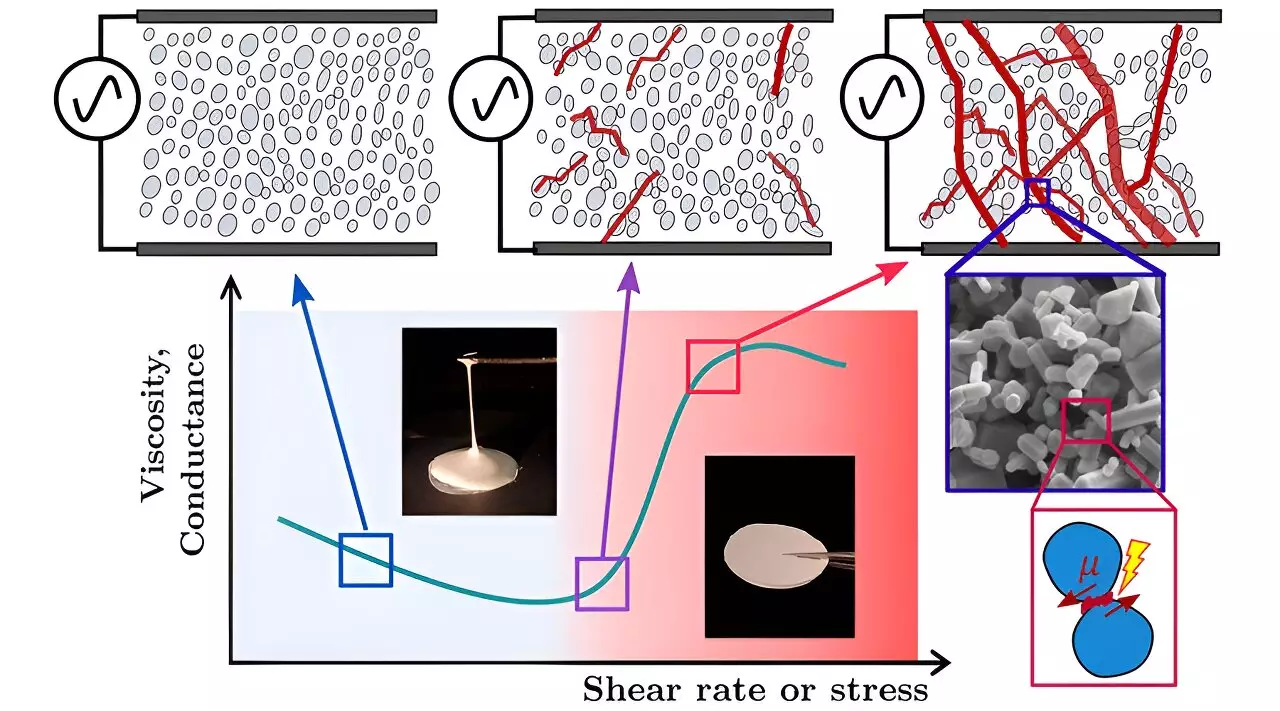Non-Newtonian fluids, such as oobleck, have properties that defy traditional definitions of solids and liquids. These substances can flow like liquids when left undisturbed but become more solid-like when subjected to pressure or stress. Scientists have long been fascinated by the behavior of non-Newtonian fluids, but understanding the underlying physics has proved challenging. However, recent research conducted by the University of Chicago’s Pritzker School of Molecular Engineering (PME) has shed new light on the subject. The team utilized piezoelectric nanoparticles, which respond to pressure, to investigate the fundamental physics of these intriguing materials. Their findings revealed that friction between particles plays a key role in the transition from a fluid to a more solid structure. This breakthrough not only provides insights into the physical origins of non-Newtonian fluids but also opens up possibilities for developing innovative materials with practical applications.
The hallmark characteristic of non-Newtonian fluids is their ability to undergo dramatic changes in viscosity under stress. Some materials, like ketchup or toothpaste, become thinner and more pourable when subjected to shaking or squeezing. Others, such as oobleck, exhibit the opposite behavior. They appear solid when manipulated but transform into a puddle when at rest. Scientists have hypothesized various explanations for this phenomenon, primarily focusing on molecular and particle interactions. However, these hypotheses have been challenging to substantiate.
One of the difficulties in studying non-Newtonian fluids is the crowded nature of their particles, making it challenging to observe their nanoscale structure. To overcome this obstacle, researchers at the PME developed a novel technique involving suspending piezoelectric nanoparticles in a liquid. These nanoparticles exhibit non-Newtonian properties similar to oobleck when present in a concentrated suspension. By applying shear force to the liquid and measuring changes in both viscosity and electrical conductivity, the team gained valuable insights into particle interactions during the transition from liquid to solid-like behavior.
Friction and the Tipping Point
The study revealed a crucial role for friction between particles in driving the transition from a more fluid-like state to a more solid-like state. The researchers discovered a tipping point at which the level of friction causes a sudden increase in viscosity. This insight into the physical forces at play in concentrated particle suspensions represents a significant step toward the design of novel non-Newtonian fluids. With further research, these engineered materials could possess tailored properties that allow for precise control of viscosity under stress. This could prove beneficial in various applications, including less clumping and clogging in paint and concrete or intentional hardening of materials when needed.
Looking Ahead
The implications of this research extend beyond fundamental understanding to a wide range of practical applications. Non-Newtonian fluids are ubiquitous in everyday life, making this study highly relevant. The researchers anticipate future advancements in designing customized non-Newtonian fluids by optimizing the combination of solvents, particles, and shear conditions. This pursuit could lead to the development of innovative materials with properties tailored to specific applications. For example, engineers could produce paint that resists clumping, liquids that mold into desired shapes when shaken, or wearable protective gear that stiffens upon impact.
Potential for Adaptive Materials
The researchers at the Pritzker School of Molecular Engineering and the University of Chicago are now exploring the possibilities of harnessing the stress-induced piezoelectric activity of their nanoparticle suspensions. This characteristic allows for the creation of adaptive and responsive materials that become stiffer under mechanical force. By leveraging these properties, new materials can be developed to meet an array of needs across various industries.
The research conducted by the University of Chicago’s Pritzker School of Molecular Engineering offers valuable insights into the physics of non-Newtonian fluids. By examining the role of friction between particles, the researchers have shed light on the transition from a fluid-like state to a more solid-like state. This understanding enables the design of new non-Newtonian fluids with tailored properties and practical applications. As scientists continue to explore this field, we can anticipate exciting advancements in material science and the development of innovative solutions to real-world challenges.



Leave a Reply